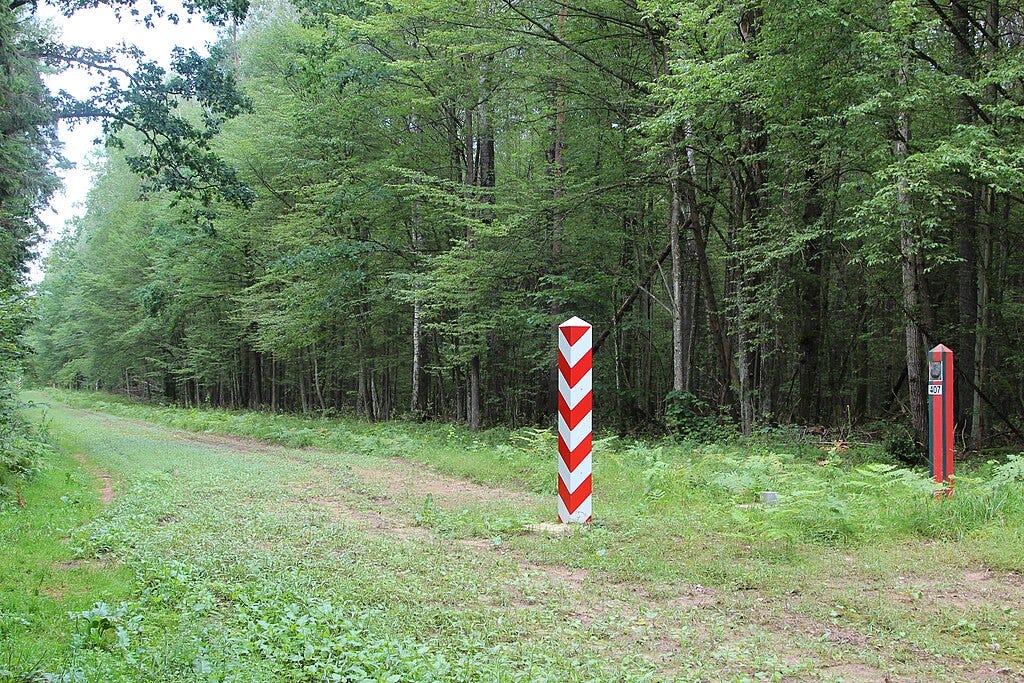Trump Reassures Poland, Sends Stark Warning to Putin
Warsaw gets the vow; the frontier’s safety still hinges on sustained troops and budgets.
Standing with newly elected Polish President Karol Nawrocki at the White House, President Trump pledged to keep U.S. troops in Poland—and hinted at more to come. His formulation—if Moscow miscalculates, “you’ll see things happen”—was meant for the Kremlin, but it echoed through Europe’s chancelleries. Warsaw heard reassurance; elsewhere, the question was credibility. Rhetoric matters, but in NATO it is deployments, exercises, and budgets that sustain deterrence.
Image: “Poland–Belarus border in Białowieża Forest” by Fallaner, licensed under CC BY-SA 4.0
Poland has done its part, lifting defense outlays well above most allies as a share of GDP and racing to field air and missile defenses, armor, and artillery. Even so, Warsaw’s shield is tethered to American politics and American fiscal capacity. Across the Channel and across the Rhine, long-dated borrowing costs have climbed, forcing hard trade-offs between guns and everything else. Europe learned in the Cold War that deterrence is a habit, not a statement; it requires constant renewal.
The strategic dilemma is straightforward: credible forward presence draws a clear line on NATO’s eastern frontier, deterring incremental probes. But credibility erodes if promises drift from practice or if budgets buckle under higher debt-service costs. Words buy time; only resources buy insurance.
Our Take: NATO’s eastern frontier is a living boundary. It holds only if commitments are matched by consistent action—and the financing to sustain it.

